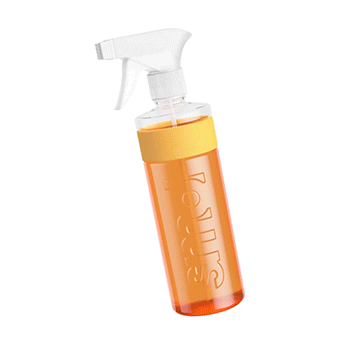
First things first, what is a fabric conditioner? And is it the same as a fabric softener?
Fabric conditioner and fabric softener are two different names for the same thing. But whatever you call it… a fabric conditioner should soften your clothing and make it smell wonderful.
Who knew?
Aside from softening and fragrancing your laundry, fabric conditioner has the important job of strengthening your clothing and making it last longer.
Rinse and spin cycles involve an awful lot of agitation and friction on the fibres of our clothes which causes stress and damages material, weakening fabrics. If the fibres are coated with fabric conditioner this strengthens them and protects against wash damage.
PLUS… using fabcon lowers the fabric’s surface resistance, making your iron slide more easily over your clothes. Ironing becomes faster and easier which is surely only a good thing.
Ready to use fabric conditioner? You’ll want to know the time and place.
The right time.
Many people believe it should be added to your washing at the same time as detergent. Not so.

Don’t waste money on 2 in 1 capsules or liquids. They won’t give the same result as separate detergent and conditioner. Fabcon should always be added in the final rinse cycle which is why there’s a separate softener compartment in your machine drawer that rinses through at the end. It’s the section with the flower or star icon or sometimes just the number III.
Adding conditioner at the start of a wash with an all-in-one detergent capsule will just remove it along with all the dirt. Your detergent will treat it as something that needs cleaning from your clothes so by the time the cycle is done it will have rinsed away with the dirty water.
The right place.
Fabric conditioner isn’t just for bedding (although of course there’s nothing quite like climbing into a clean, soft, fragrant bed).
It’s great for those in hard water areas. If your clothes come out of the wash feeling rough - it could be high mineral levels in the water attaching to fibres and making them stiff. Conditioners can remove some of these minerals for softer clothing.
Don’t like bobbles on your clothing? Using fabric conditioner can protect the fibres of your favourite jumper from the friction of your movement. When the surfaces of your clothing rub together (producing the bobbles) the softener keeps things smooth.
Finally, if you have sensitive skin, a fabric conditioner can ease the irritation of rough clothing against your skin. In fact the National Eczema Society state studies have shown that clothes treated with a fabric softener have a potential benefit for people with sensitive skin.
…and just the right amount.
Many of us are guilty of overdosing on our fabric conditioner. The big brands encourage it with their huge unwieldy bottles that spill and surge plus their refusal to concentrate formulations.

Not so for smol. Our concentrated formula means 4 tiny pumps is all you need for a standard load. So your twin pack could last many many months. You can also adjust amounts if your drum size is large or you prefer a stronger scent. No mess, no spills and no waste.
Wrong time, wrong place…
But fabric conditioner is not the answer to all your laundry problems and there are definitely times where you do not want to use it.
Don’t use it on your towels. We may love them soft and fluffy but fabric conditioner stops them soaking up moisture and well… isn’t that the whole point of a towel?
You should also never use fabric softener on cloth nappies. Absorbency is key and conditioner will prevent it.
If you clean with microfiber cloths, don’t use conditioner on them when they are washed. Their thousands of tiny threads that trap dust and absorb liquids will become coated with conditioner which will stop them working to their best.
Many types of sports wear have special wicking technology to absorb sweat from your skin allowing it to evaporate away and keep you cool. If you coat these fabrics with softener it will prevent them wicking the sweat away.
Lastly, don’t use fabric conditioner on water-proof clothing or flame-resistant clothing. It may impact the ability of the various finishes to carry out their job.
A dirty secret.
But did you know much of the conditioner in the shops hides a dirty secret? The key component is rendered fat from cows, horses and sheep. It’s a cheap ingredient that sticks to your clothing which is why it’s popular with manufacturers. They disguise it using names like esterquats or dehydrogenated tallow dimethyl ammonium chloride. It’s all just animal fat.
smol fabcon contains no such thing. We prefer our cows in fields. Plus there’s an additional bonus of no black mould in your detergent drawer (mould LOVES to feed on leftover fat).
So to sum up… here are our 5 fabric-conditioner need-to-knows!
- Use a separate fabric conditioner (adding it to your detergent drawer).
- Fabric conditioner softens laundry if you’re washing in hard-water areas.
- Got sensitive skin? It can guard against irritation from rough fabrics.
- Swapping to smol fabcon saves money and means NO ANIMAL FAT!
- Never use on towels, cloth nappies, microfiber cloths, specialist sportswear or waterproof/flame-resistant fabric.








